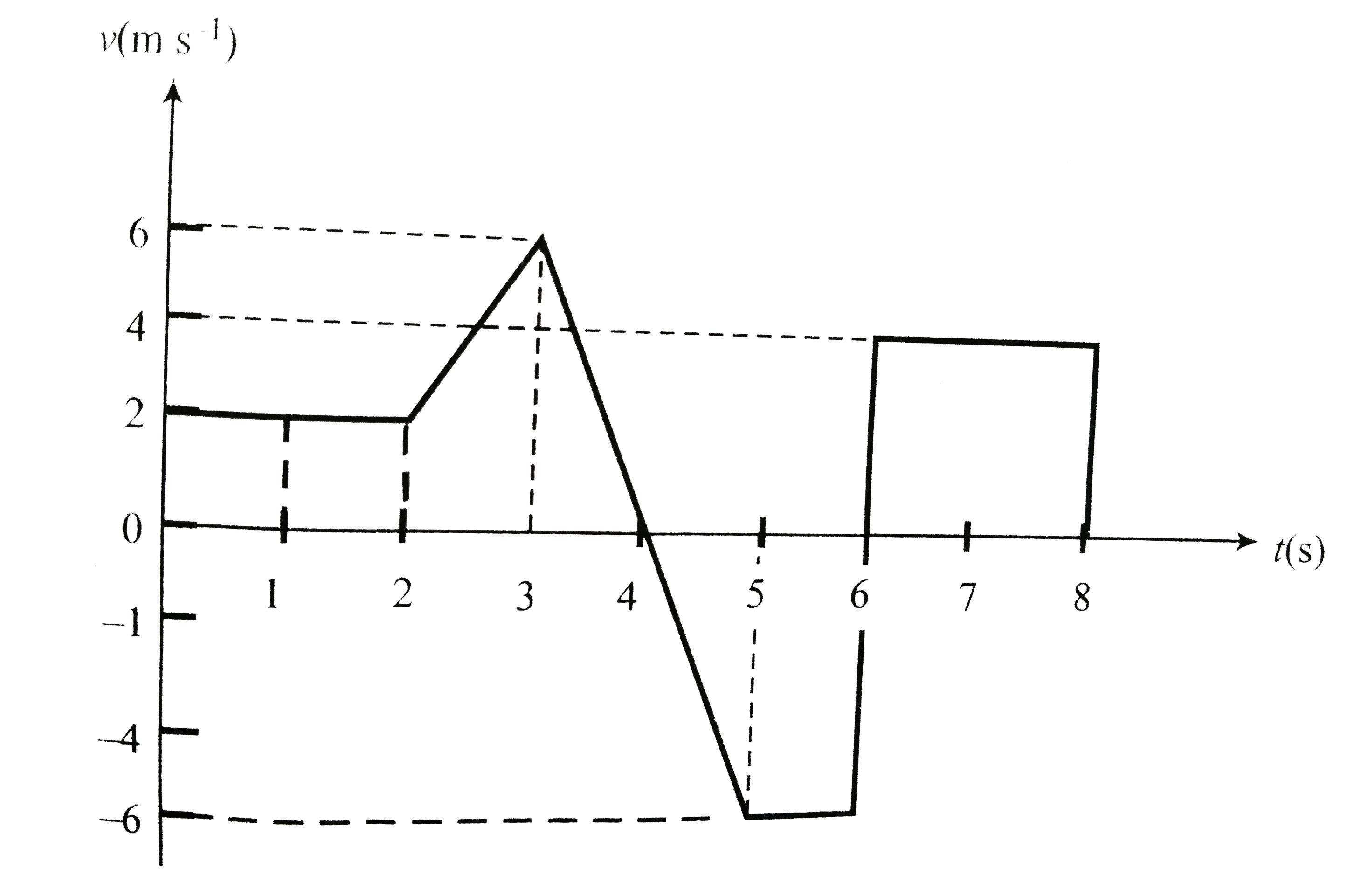For motion of an object along the x-axis the velocity v dipends on the displacement x an v=3x2, then what is the acceleration at x=2m.
48ms−2
80ms−2m.
18ms−2
144ms−2
The correct Answer is:B
To find the acceleration of an object whose velocity depends on its displacement, we start with the given relationship between velocity v and displacement x:
1. Given Equation:
v=3x2
2. Acceleration Formula:
The acceleration a can be expressed in terms of velocity and displacement using the chain rule:
a=vdvdx
3. Finding dvdx:
To find dvdx, we differentiate v with respect to x:
dvdx=ddx(3x2)=6x
4. Substituting v and dvdx into the acceleration formula:
Now we substitute v and dvdx into the acceleration formula:
a=v⋅dvdx=(3x2)(6x)=18x3
5. Calculating acceleration at x=2m:
Now we substitute x=2m into the acceleration equation:
a=18(23)=18⋅8=144m/s2
Thus, the acceleration at x=2m is 144m/s2.
v=3x2
The acceleration a can be expressed in terms of velocity and displacement using the chain rule:
a=vdvdx
To find dvdx, we differentiate v with respect to x:
dvdx=ddx(3x2)=6x
Now we substitute v and dvdx into the acceleration formula:
a=v⋅dvdx=(3x2)(6x)=18x3
Now we substitute x=2m into the acceleration equation:
a=18(23)=18⋅8=144m/s2
Topper's Solved these Questions
- KINEMATICS-1BOOK - CENGAGE PHYSICS ENGLISHCHAPTER - KINEMATICS-1EXERCISE - Graphical Concept
17 Videos
- KINEMATICS-1BOOK - CENGAGE PHYSICS ENGLISHCHAPTER - KINEMATICS-1EXERCISE - Graphical cancept
1 Video
- KINEMATICS-1BOOK - CENGAGE PHYSICS ENGLISHCHAPTER - KINEMATICS-1EXERCISE - Subjective
29 Videos
- GRAVITATIONBOOK - CENGAGE PHYSICS ENGLISHCHAPTER - GRAVITATIONEXERCISE - INTEGER_TYPE
1 Video
- KINEMATICS-2BOOK - CENGAGE PHYSICS ENGLISHCHAPTER - KINEMATICS-2EXERCISE - Exercise Integer
9 Videos
Similar Questions
The velocity-time graph of a body is shown in .
The displacement of the body in 8s is.
 .
.
View SolutionThe acceleration will be positive in .

View SolutionA car moving with constant acceleration covered the distance between two points 60.0m apart in 6.00s. Its speed as it passes the second point was 15.0m/s.
(a) What is the speed at the first point?
(b) What is the acceleration?
(c) At what prior distance from the first was the car at rest?
View SolutionGravitational acceleration on the surface of a planet is √611g. where g is the gravitational acceleration on the surface of the earth. The average mass density of the planet is 23 times that of the earth. If the escape speed on the surface of the earht is taken to be 11kms−1 the escape speed on the surface of the planet in kms−1 will be
View SolutionA particle is projected with velocity u at angle θ with horizontal. Find the time when velocity vector is perpendicular to initial velocity vector.
View SolutionThe velocity v and displacement x of a particle executing simple harmonic motion are related as
vdvdx=−ω2x.
Atx=0,v=v0. Find the velocity v when the displacement becomes x.
View SolutionA particle starts with some initial velocity with an acceleration along the direction of motion. Draw a graph depicting the variation of velocity (v) along y-axis with the variation of displacement(s) along x-axis.
View SolutionFor motion of an object along the x-axis the velocity v dipends on the displacement x an v=3x2, then what is the acceleration at x=2m.
View SolutionFor motion of an object along the x-axis the velocity v depends on the displacement x as v=3x2−2x, then what is the acceleratiobn at x=2m.
View SolutionThe velocity of a particle moving on the x-axis is given by v=x2+x, where x is in m and v in m/s. What is its position (in m) when its acceleration is 30m/s2.
View SolutionFor motion of an object along x-axis, the velocity V depends on the displacement x as V=3x2−2x. Accelertion atx=2m is 10n where n is an integer. The value of n is ____________.
View SolutionIf v is the velocity of a body moving along x-axis, then acceleration of body is
View SolutionX-অক্ষ বরাবর গতিশীল একটি কণার বেগ v ও সরণ x-এর মধ্যে সম্পর্ক v2=16−x2 | x=5 সেমি দূরত্বে কণাটির ত্বরণ নির্ণয় কর |
View SolutionThe velocity v and displacement x of a particle executing simple harmonic motion are related as
vdvdx=−ω2x.
Atx=0,v=v0. Find the velocity v when the displacement becomes x.
View SolutionThe velocity v and displacement x of a particle executing simple harmonic motion are related as
vdvdx=−ω2x.
Atx=0,v=v0. Find the velocity v when the displacement becomes x.
View Solution

